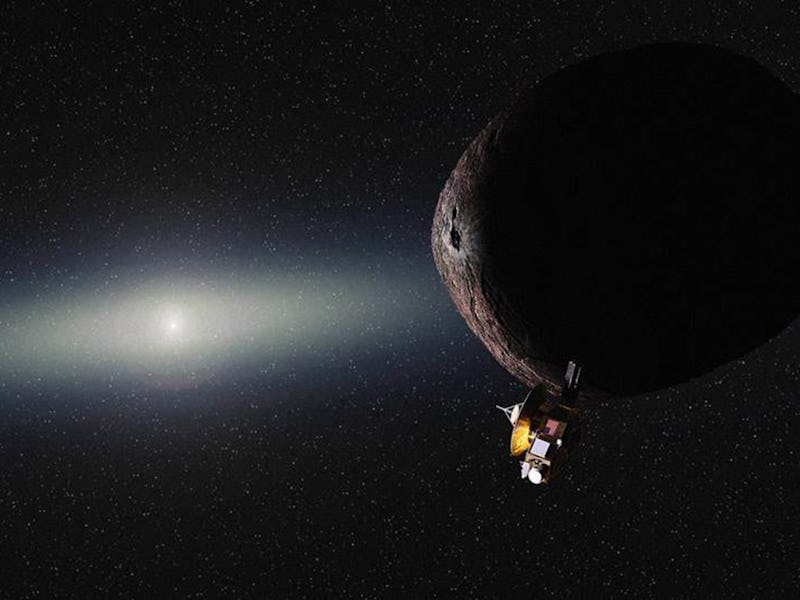New Horizons already earned its spot in the pantheon of very good space probes when it flew by Pluto in 2015, bringing the former ninth planet into focus for the first time ever. It’s now halfway to its next port of call, and new findings now indicate it might actually be ports of call. We’ve got a surprise moon!
The NASA probe is headed toward an object in the Kuiper Belt, the solar system’s second asteroid belt that lies beyond Neptune, called 2014 MU69, a name that is as nice as it is hard to remember precisely. It’s tiny compared with Pluto, measuring only about 20 miles in diameter, and it’s a total mystery compared to the beloved if demoted planet.
As such, NASA astronomers are doing all they can ahead of New Horizons’s flyby on New Year’s Day 2019 to find out what they can. And new results from the Stratospheric Observatory for Infrared Astronomy, or SOFIA, indicate what scientists originally took to be one small, peanut-shaped object might actually be a small object and its even smaller moon, both of which are closer to a traditional spherical shape.
Just like Pluto and its primary moon Charon, 2014 MU69 might be a binary system. In that case, it’s likely both objects would be about nine to 12 miles in diameter.
“We really won’t know what MU69 looks like until we fly past it, or even gain a full understanding of it until after the encounter,” New Horizons science team member Marc Bule said in a statement. “But even from afar, the more we examine it, the more interesting and amazing this little world becomes.”
SOFIA itself deserves some mention here, considering it’s unlike pretty much any other observatory. Instead of remaining stationary atop a mountain or orbiting the Earth, this particular observatory flies above the Pacific in a modified 747, providing airborne astronomical observations.
Data collected on July 10 of this year indicated a tiny blip as 2014 MU69 passed in front of a star. According to the New Horizons team, one plausible explanation for that was the passage of another object — the moon — around it.
NASA has only a little more than a year left to figure out all it can about the object, and then New Horizons will fly by for the object’s — or objects’ — big closeup. While flying by Pluto revealed something humanity had spent decades longing to see up close, this flyby will be a chance to uncover a mystery we only just discovered.
